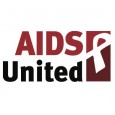The following post is by Jesse Milan Jr., president and CEO of AIDS United.
The COVID-19-related death toll in the United States recently surpassed 100,000. Estimates for how many more people will die because of COVID-19 vary wildly. Some are describing this situation as unprecedented.
It is not. And I know because I am a long-term survivor of HIV.
I have been living with HIV for nearly four decades and have attended more than my fair share of funerals. Too many times, I have sat in pews next to the grieving friends and family of someone we loved who was now in a casket or urn. The reality of what the HIV virus can do has shaped most of my adult life.
Today, June 5, is HIV Long-term Survivors Day, a day set aside to recognize the accomplishment of surviving and the needs of those of us who are thriving and aging with HIV. There are many unique things that we who are long-term survivors need to continue surviving, but there is one that we want for everyone: to end the HIV epidemic in the United States.
Death is certain for all of us. But no one should die because of HIV or from COVID-19. I intend to survive both.
AIDS United released a road map in 2018 outlining the steps the federal government could take to end the HIV epidemic. Congress needs to build upon the initial investments of the president’s Ending the HIV Epidemic initiative, particularly through the HEROES Act and the upcoming appropriations process.
Simply put, we need more funding for prevention and treatment-related work.
Thanks to scientific advances, and the HIV community’s decadeslong advocacy, there are more options to prevent HIV than ever before. Safer sex education works. Access to sterile syringes works. Preexposure prophylaxis, or PrEP—a daily medicine that prevents HIV—works.
We also now know that treatment is prevention. When the amount of the HIV virus, or viral load, falls to a scientifically undetectable level in a person’s blood, that person cannot transmit HIV to others. This is what we mean when we say undetectable equals untransmittable, or U=U.
Reaching an undetectable viral load has another great benefit beyond prevention. It means those of us living with HIV have the chance to live a long and healthy life. Despite the personal and prevention-related benefits, barely half those of us in the U.S. living with HIV have achieved an undetectable viral load.
More needs to be done.
The Centers for Disease Control and Prevention needs $1.3 billion more to fund prevention efforts. These include grants to community-based organizations that are led by members of the community and know how to best reach their communities.
The Ryan White HIV/AIDS Program needs $2.7 billion more to ensure that low-income people living with HIV who are uninsured have access to HIV care, support services and medication.
Legislators must take other actions, too. Congress must start using an evidence-based approach to drug user health and rescind the federal ban on funding for syringes in syringe services programs.
We also need to increase health care access through Medicaid expansion and strengthening Medicare. Three out of every five people living with HIV are covered by Medicaid or Medicare. Cuts to these programs, like block grants or raising the Medicare eligibility age, hurt those of us living with HIV.
As a Black gay man, living with HIV, the intersections of racial and social justice have also defined my life. Surviving with intersectional identities are challenges for people living with HIV. Black people, for example, account for nearly half the new HIV diagnoses. We need more specific interventions and strategic investments with gay and bisexual men, communities of color, women and people living in the Deep South.
People often say the number of people living with or who have died from HIV is countless. To say they are countless means those lives are faceless and nameless. But I remember the faces and names of those countless ones already lost who I knew and loved. And I relish the faces and names of my brother and sister long-term survivors.
I remember very well when HIV-related deaths surpassed 100,000 in the United States. It was January 1991. The New York Times did not mark that occasion by listing the names of the dead. It was not front-page news. It was barely a blip on most people’s radar.
Another 600,000 people in the United States have died from HIV-related causes since 1991. While, thankfully, the death rate has dropped significantly in recent years as treatment options and access to health insurance have increased, there are still approximately 13,000 people who die each year in the United States because of HIV.
That is 13,000 families gathered for 13,000 funerals each year.
Death is certain for all of us. But no one should die because of HIV or from COVID-19. I intend to survive both. And the government plays an essential role in making that happen. These are my hopes on this HIV Long-term Survivors Day.








2 Comments
2 Comments